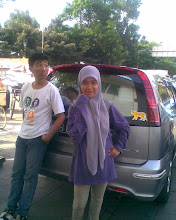Jakarta (English pronunciation: /dʒəˈkɑrtə/;[5]), (formerly Batavia and officially the Special Capital Territory of Jakarta), is the capital and largest city of Indonesia. Located on the northwest coast of Java, it has an area of 661 square kilometres (255 sq mi) and a 2010 census count population of 9,580,000.[4] Jakarta is the country's economic, cultural and political centre. It is the most populous city in Indonesia and in Southeast Asia, and is the tenth-largest city in the world. The urban area, Jabodetabek, is the second largest in the world. Jakarta is listed as a global city in the 2008 Globalization and World Cities Study Group and Network (GaWC) research.[6] The city's name is derived from the Old Javanese word "Jayakarta" which translates as "victorious deed", "complete act", or "complete victory".
Established in the fourth century, the city became an important trading port for the Kingdom of Sunda. It grew as the capital of the colonial Dutch East Indies. It was made capital of Indonesia when the country became independent after World War II. It was formerly known as Sunda Kelapa (397–1527), Jayakarta (1527–1619), Batavia (1619–1942), and Djakarta (1942–1972). Jakarta has also been known as the Big Durian by most Indonesians and some foreigners.[7]
Landmarks include the National Monument and Istiqlal Mosque. The city is the seat of the ASEAN Secretariat. Jakarta is served by the Soekarno-Hatta International Airport, Halim Perdanakusuma International Airport, and Tanjung Priok Harbour; it is connected by several intercity and commuter railways, and served by several bus lines running on reserved busways.
Minggu, 20 Februari 2011
djakarta
Diposting oleh
galank panji wisnu arimurti
di
22.53
Kirimkan Ini lewat Email
BlogThis!
Bagikan ke X
Berbagi ke Facebook

Label:
history
Langganan:
Posting Komentar (Atom)






0 komentar:
Posting Komentar